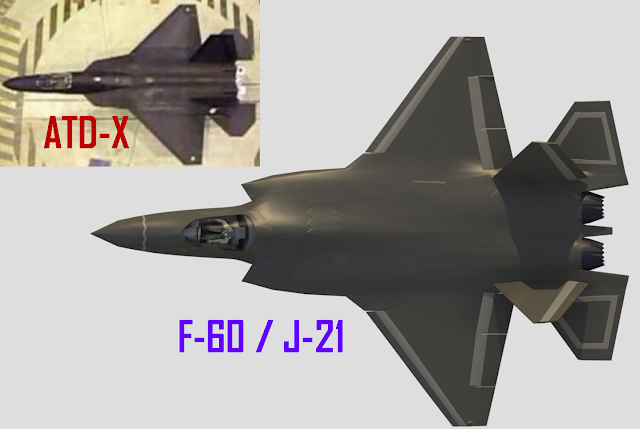As much as the resources wielded by the Chinese state aerospace industry impress outsiders these days, few could have expected that one of the companies in the sector would want to produce a stealth fighter on its own account.
But that is just what Shenyang Aircraft wants to do. Equally surprisingly, the Chinese air force is turning its nose up at the result. What looks like a thoroughly modern stealth fighter is apparently not good enough to serve as China's next medium-weight combat aircraft.
After three evidently staged appearances of the real aircraft this year, Avic displayed a model at Airshow China in Zhuhai last week, displaying the fighter that is unofficially called the J-31 and known to come from Shenyang. The aircraft is being developed “for the international defense market,” says Avic.
The model was labeled as a concept fighter, but it showed few if any differences from the real aircraft that appeared first under wraps on a truck in June, then being pulled around an airfield in September and, finally, on Oct. 31, in the air, prominently numbered “31001” and possibly making its first flight. It is clear, then, that the project has transcended the concept stage.
The aircraft has been designed to deliver a highly stealthy configuration at low cost, with a heavy weapons load capability over a wide combat radius, says Avic. The model is a single-seat, twin-tail, twin-engine aircraft with a high wing, like the real aircraft seen in unattributed photographs on the Internet. As described at the show, the fighter has a typical takeoff weight of 17.5 metric tons, is 16.9 meters (55.5 ft.) long and 4.8 meters high with a wingspan of 11.5 meters.
The aircraft that flew last month has two Klimov RD-93 engines, which project engineers do not regard as sufficiently powerful, industry executives say. As fitted to the JF-17 (or FC-1) single-engine export fighter from Shenyang's rival, Chengdu Aircraft, the RD-93 produces 19,000 lb. thrust. Regardless of the RD-93's power, Shenyang needs a Chinese engine if it is to avoid Russia holding a veto over J-31 sales. Judging from photographs of the prototype, the nacelles may be designed for engines larger in diameter than the RD-93, a derivative of the MiG-29's RD-33. The alternative may be the reported WS-13 Taishan from the Guizhou plant of propulsion specialist Avic Engine.
Avic says the J-31 has a combat radius of 1,250 km (780 mi.) on internal fuel or 2,000 km with external tanks. Maximum speed is Mach 1.8, takeoff distance is 400 meters and its landing distance 600 meters.
“Operational effectiveness will be higher than current or upgraded fourth-generation fighters or almost equivalent to typical fifth-generation,” says Avic. The reference to fifth-generation aircraft presumably indicates the Lockheed Martin F-22 and F-35.




















